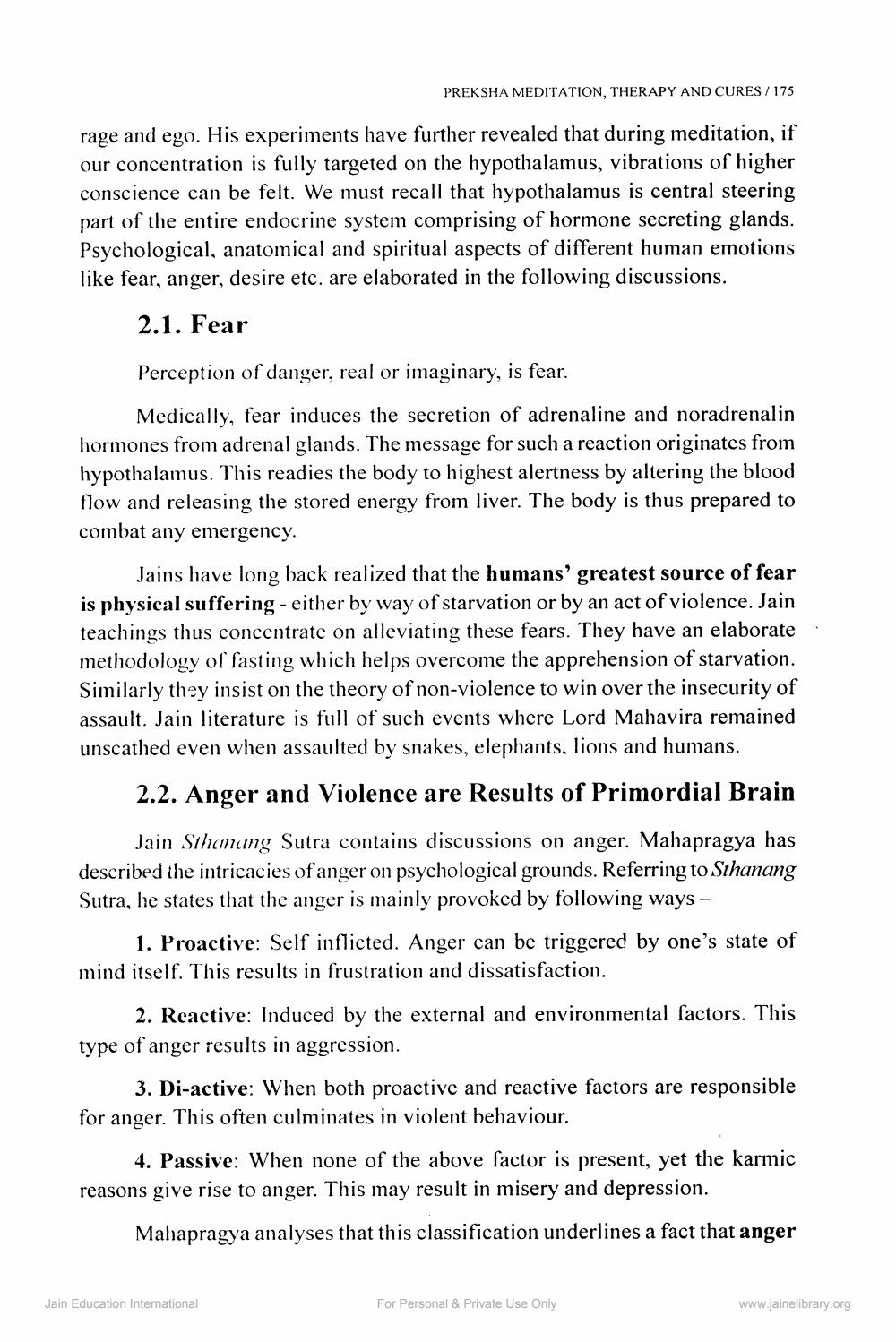________________
PREKSHA MEDITATION, THERAPY AND CURES/ 175
rage and ego. His experiments have further revealed that during meditation, if our concentration is fully targeted on the hypothalamus, vibrations of higher conscience can be felt. We must recall that hypothalamus is central steering part of the entire endocrine system comprising of hormone secreting glands. Psychological, anatomical and spiritual aspects of different human emotions like fear, anger, desire etc. are elaborated in the following discussions.
2.1. Fear
Perception of danger, real or imaginary, is fear.
Medically, fear induces the secretion of adrenaline and noradrenalin hormones from adrenal glands. The message for such a reaction originates from hypothalamus. This readies the body to highest alertness by altering the blood flow and releasing the stored energy from liver. The body is thus prepared to combat any emergency.
Jains have long back realized that the humans' greatest source of fear is physical suffering - either by way of starvation or by an act of violence. Jain teachings thus concentrate on alleviating these fears. They have an elaborate methodology of fasting which helps overcome the apprehension of starvation. Similarly they insist on the theory of non-violence to win over the insecurity of assault. Jain literature is full of such events where Lord Mahavira remained unscathed even when assaulted by snakes, elephants, lions and humans.
2.2. Anger and Violence are Results of Primordial Brain
Jain Sthamung Sutra contains discussions on anger. Mahapragya has described the intricacies of anger on psychological grounds. Referring to Sthanang Sutra, he states that the anger is mainly provoked by following ways -
1. Proactive: Self inflicted. Anger can be triggered by one's state of mind itself. This results in frustration and dissatisfaction.
2. Reactive: Induced by the external and environmental factors. This type of anger results in aggression.
3. Di-active: When both proactive and reactive factors are responsible for anger. This often culminates in violent behaviour.
4. Passive: When none of the above factor is present, yet the karmic reasons give rise to anger. This may result in misery and depression.
Mahapragya analyses that this classification underlines a fact that anger
Jain Education International
For Personal & Private Use Only
www.jainelibrary.org




